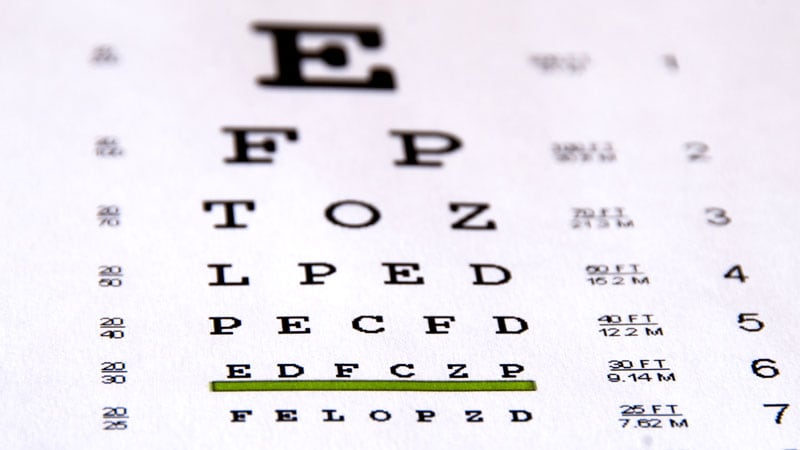The protocol used to administer anti-vascular endothelial growth factor (VEGF) therapy does not affect the visual acuity of patients with neovascular age-related macular degeneration, results from a large, long-term study suggest.
“I think this raises a question as to whether any change we make to injection frequency is actually beneficial or makes any difference,” said Roy Schwartz, MD, from Moorfields Eye Hospital in London.
The finding — presented at the virtual EURETINA 2020 — contradicts the conclusions of earlier studies. It has special relevance during the COVID-19 pandemic because many patients have missed treatments, he told Medscape Medical News.
Researchers generally agree that outcomes in the real world fall short those in clinical trials of anti-VEGF drugs, in which injections were given as frequently as once a month. Many patients have difficulty coming in for appointments and dislike injections, and these issues are hard to overcome without the resources of a clinical trial or the ability to exclude patients with severe comorbidities.
So should all patients receive monthly injections, or can some get the full benefit of anti-VEGF therapy with a treat-and-extend approach, which consists of careful monitoring and less frequent injections?
I think this raises a question as to whether any change we make to injection frequency is actually beneficial or makes any difference.
To identify the optimal protocol, Schwartz and his colleagues analyzed data on 52,552 eyes — some followed for up to 12 years — from 27 sites in the United Kingdom and entered in the Medisoft Clinical electronic medical records system from 2006 to 2018. Preliminary results from a survey of these sites suggested that the treat-and-extend approach became more common over time, Schwartz said.
In a subset analysis of patients divided into 2-year cohorts that reflected treatment initiation — 2008 – 2009, 2010 – 2011, 2012 – 2013, 2014 – 2015, and 2016 – 2017 — the number of injections in the first 3 years of a patient’s treatment increased from the earliest to the latest cohort, whereas the number of visits fluctuated.
| Table. Regimen in the First 3 Years of Treatment, by Year of Initiation | ||||
| Treatment Initiation | n | Mean Injections, n | Mean Visits, n | Visual Acuity at 3 Years, ETDRS Letters |
|---|---|---|---|---|
| 2008–2009 | 2395 | 9.5 | 24.4 | 51.8 |
| 2010–2011 | 5017 | 9.3 | 23.4 | 53.1 |
| 2012–2013 | 5432 | 7.9 | 21.9 | 53.3 |
| 2014–2015 | 6083 | 10.4 | 22.5 | 54.7 |
| 2016–2017 | 633 | 11.2 | 24.2 | 55.2 |
Visual acuity at the end of 3 years improved with each successive cohort. At first glance, this suggests that treatment protocols improved over time. However, baseline visual acuity was better in each successive cohort.
In fact, on multivariate analysis, baseline visual acuity accounted for all the improvement in visual acuity, which suggests that treatment of the disease did not improve during the study but the ability of clinicians to identify it early did.
“I think we can say that, at least according to our data, there is no improvement over the years with the shifting paradigms,” said Schwartz. “And I think that’s mostly a point of concern.”
The researchers also assessed change in the visual acuity of 353 patients who had been in treatment for 10 to 12 years. During that time, average visual acuity fell to below 40 letters. Only 5964 injections were administered to 373 eyes, but the precise number of injections per patient per year is still being assessed, he reported.
The decline in visual acuity could be related to anatomic changes, such as geographic atrophy and subretinal fibrosis build up, he said.
I think it’s been shown over and over that the more we treat, the better patients do.
Or, the study participants simply might not have received enough injections, said Thomas Ciulla, MD, from the Indiana University School of Medical School in Indianapolis.
“I think it’s been shown over and over that the more we treat, the better patients do,” he told Medscape Medical News.
In the first 3 years of treatment, patients received fewer than 12 injections, which works out to fewer than four injections per year, Ciulla pointed out.
He and his colleagues found that visual acuity declined over the course of 1 year in patients who received no more than four injections, and improved with an increase in the number of injections, up to 10, in their study of 49,485 eyes.
And an analysis of 109 cases by another team showed that visual acuity could be preserved for at least 7 years with fixed monthly doses of an average of 10.5 injections per year.
Schwartz reports financial relationships with Allergan and Eyewise. Ciulla is chief medical officer of Clearside Biomedical.
European Society of Retina Specialists (EURETINA) 2020: Abstract 9069. Presented October 2, 2020.
Follow Medscape on Facebook, Twitter, Instagram, and YouTube

